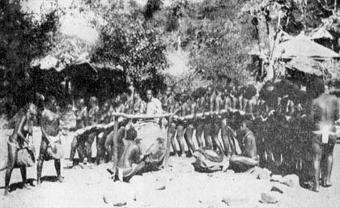| Abstract
This section reproduces "Songs, Dances, Mimes and Symbolism of Venda Girls' Initiation Schools (Part 2): Milayo." In the first section, "Venda Education and the Function of Milayo," Blacking claims that the primary role of initiation was to prepare the girls for life, by emphasising Venda techniques of human relationships. Much of the instruction the girls received was contained in the milayo, though few of them understood or were concerned about their symbolic meaning. Blacking argues that the ability to recite them served as a certificate of attainment, allowing graduates to participate in social activities restricted to women who had undergone initiation. In "Variation in Styles of Teaching Milayo," Blacking provides a description of the techniques used my masters of initiation in the performance of the milayo, and he illustrates the differences in style by drawing on the techniques used by three prominent instructors he observed during his fieldwork. The next section, "Themes of the Symbolic Milayo," outlines some of the dominant themes in the milayo of the girls' initiation schools, namely themes associated with marital responsibilities, sexuality and child-birth. Blacking claims that the instructors presented the milayo in the form of a journey, which could be related to the novice's passage through initiation. The chapter concludes with an extensive collection of 255 examples of milayo, which are ordered into sets that represent the various 'paths' along the 'journey' of milayo performance. SR |
